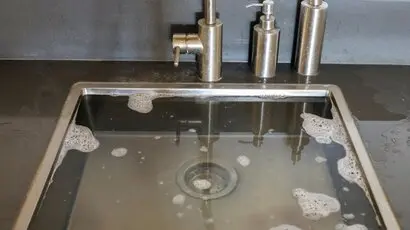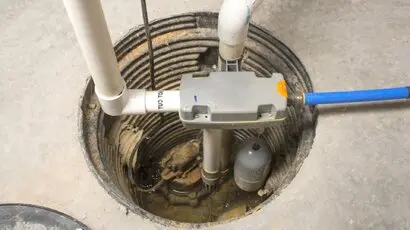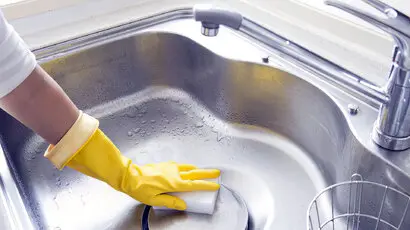Why Does My Kitchen Sink Smell Like Sewage?
Have you noticed a bad sewage smell coming from your kitchen drain? We have listed the four main culprits behind a bad odour coming from your drain, and how to fix it!
Entering the kitchen to make steaming coffee that jolts you out of sleep, only to find the sink reeking isn’t what most people expect!
Unfortunately, this does happen often. Many folks notice their kitchen sink smells like sewage and are unsure how to fix it. If you’re experiencing this, this guide is here to help!
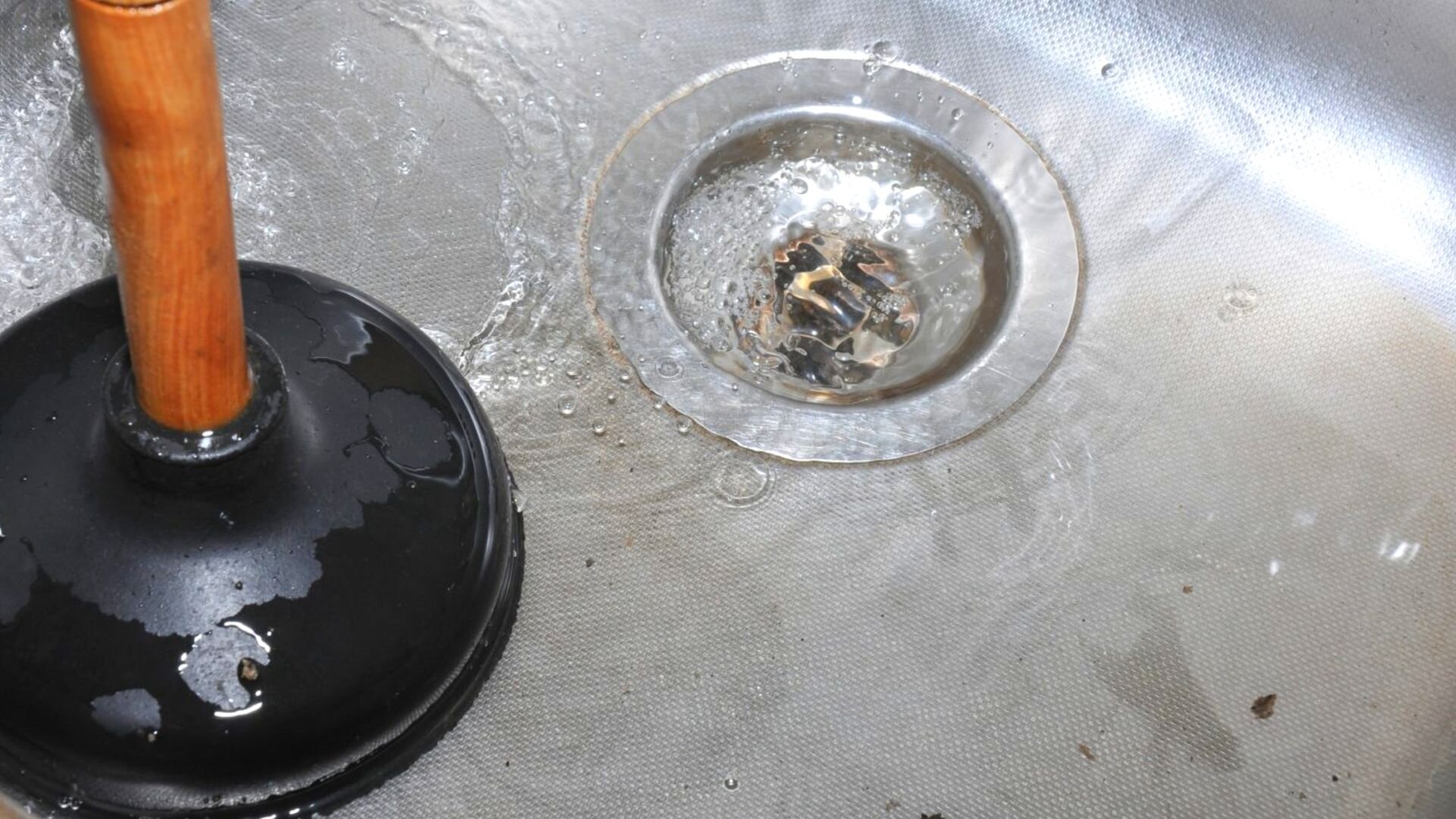
A clogged kitchen drain is one of the most common reasons for various plumbing problems like leaks and wastewater backflow, which can emit an unbearable foul odour. And there’s no one reason for a clogged drain.
Anything from debris deposits to old and worn-out pipes can cause this issue. Food, hair and other waste particles entering the drain can block and prevent it from transporting wastewater to the sewage tank. Over time, the accumulated debris and wastewater in the pipe may start smelling.
When wastewater can’t flow down the drain, it piles up in the sink, causing a bad smell if you don’t tackle it right away.
Corroded or damaged pipes can also block wastewater flow, causing slow or even no drainage. Until the pipe is fixed or replaced, that sewage smell won’t disappear.
Note that if too much water is in the sink, you must remove it manually (gross, we know). So, we recommend wearing gloves, an old apron, a face mask and safety glasses to protect yourself from splashes.
That said, there are a few things you can do to clear your clogged drain:
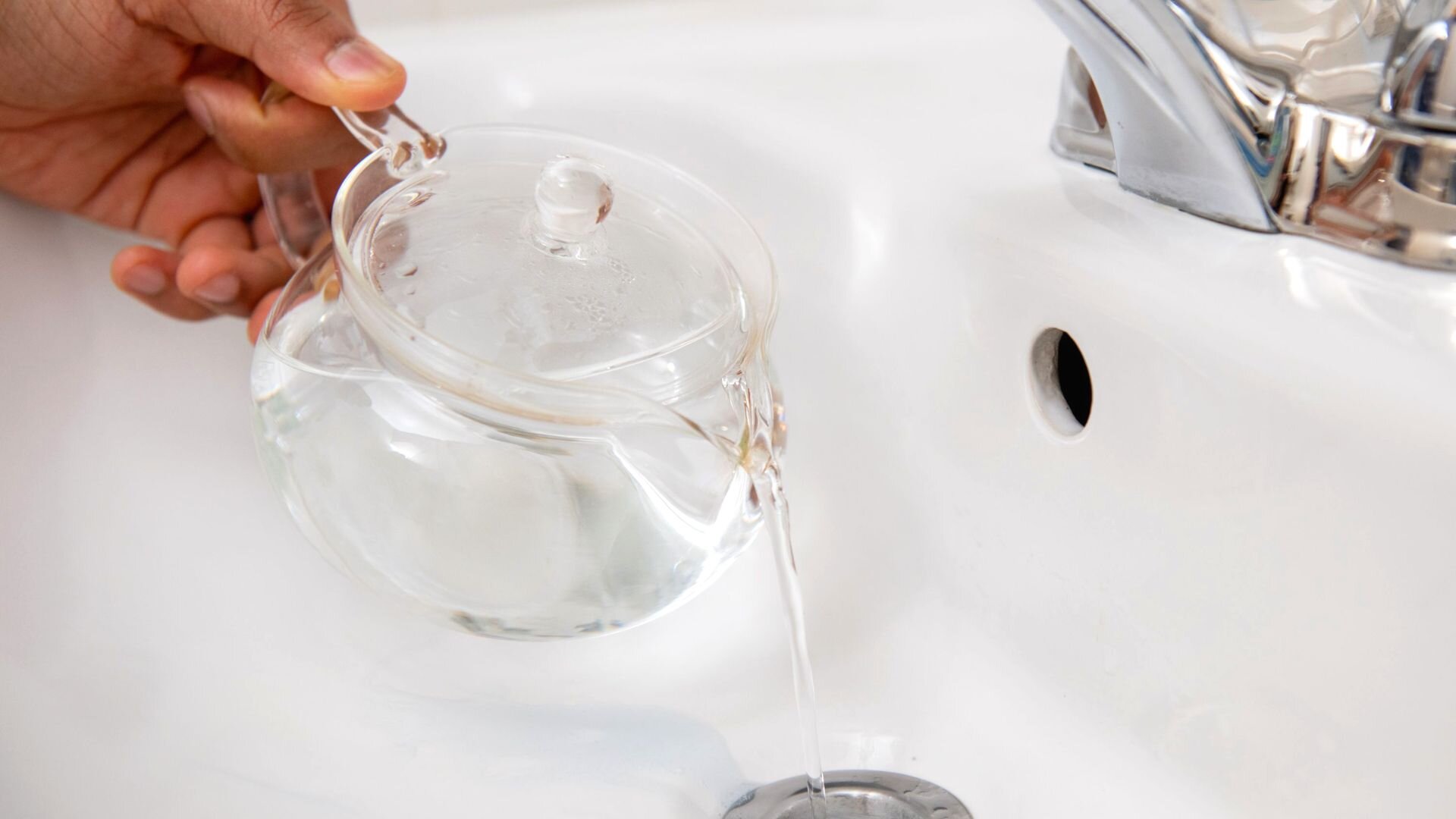
Once you’ve made some space in the sink, carefully pour at least a litre of boiling water slowly near the drain opening and wait for some time. This should help dissolve hair and food particles causing the clog. Repeat this step if needed, and flush the pipe with normal water.
Note- Avoid this method if you have PVC pipes, as the heat can damage them permanently.
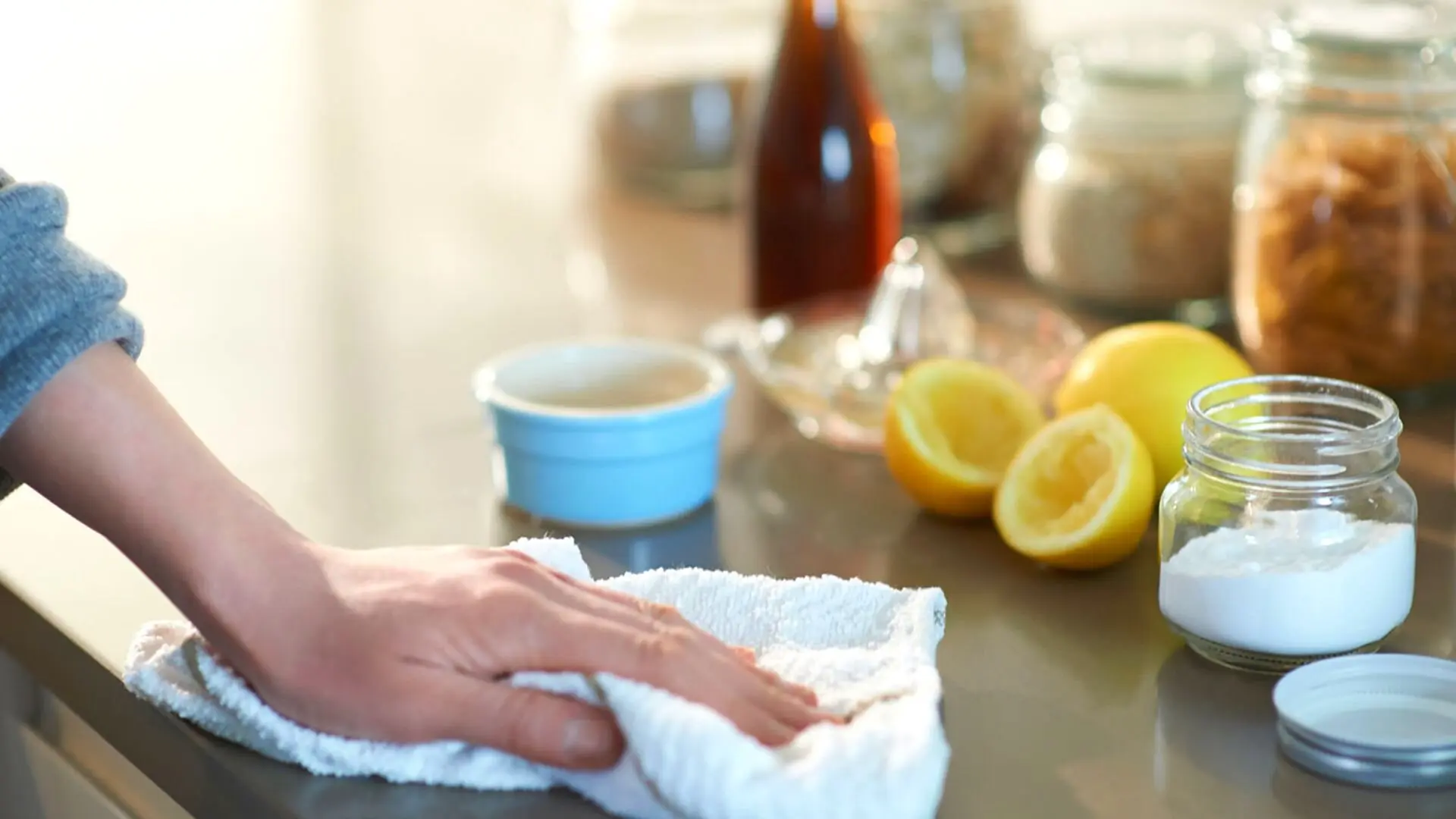
Boiling water may be ineffective in eliminating stubborn clogs, meaning you may need something stronger. Thankfully, you will find the ingredients for that in your kitchen cabinet!
Pour a cup of white vinegar near the drain opening and follow it with a cup of baking soda. This will form a bubbling chemical reaction inside the drain to dissolve dirt and debris.
The longer you allow the reaction to work, the more influential the results will be, so we’d advise doing this at night and returning to flush the drain in the morning. Just pour hot water down the sink, and you should see the water draining again.
If the main sewer line is partially or fully clogged, wastewater can flow back into the outlet drains of your home. As a result, you may see standing water in your kitchen sink drain, which will smell like sewage.
You may use a kitchen drain plunger to break up the clog in the pipe. To create a tight seal, remove the drain stopper and place the plunger head on it to make a tight seal. Then, push and pull the handle continuously until you see the water level going down.
Alternatively, you can manually use a drain snake to remove the clog further down the drain. Start by extending the snake’s cable and slowly inserting it through the drain opening. You know the snake has hit the clog when you feel some resistance.
Then, turn the handle anti-clockwise to pull out the cable and the clog. You might need to try a few times to completely clear it.
However, remember that these methods work only if the clog is deeper in the pipe. If the sewer pipe is blocked up to the outlet drains, call the professionals to clean it.
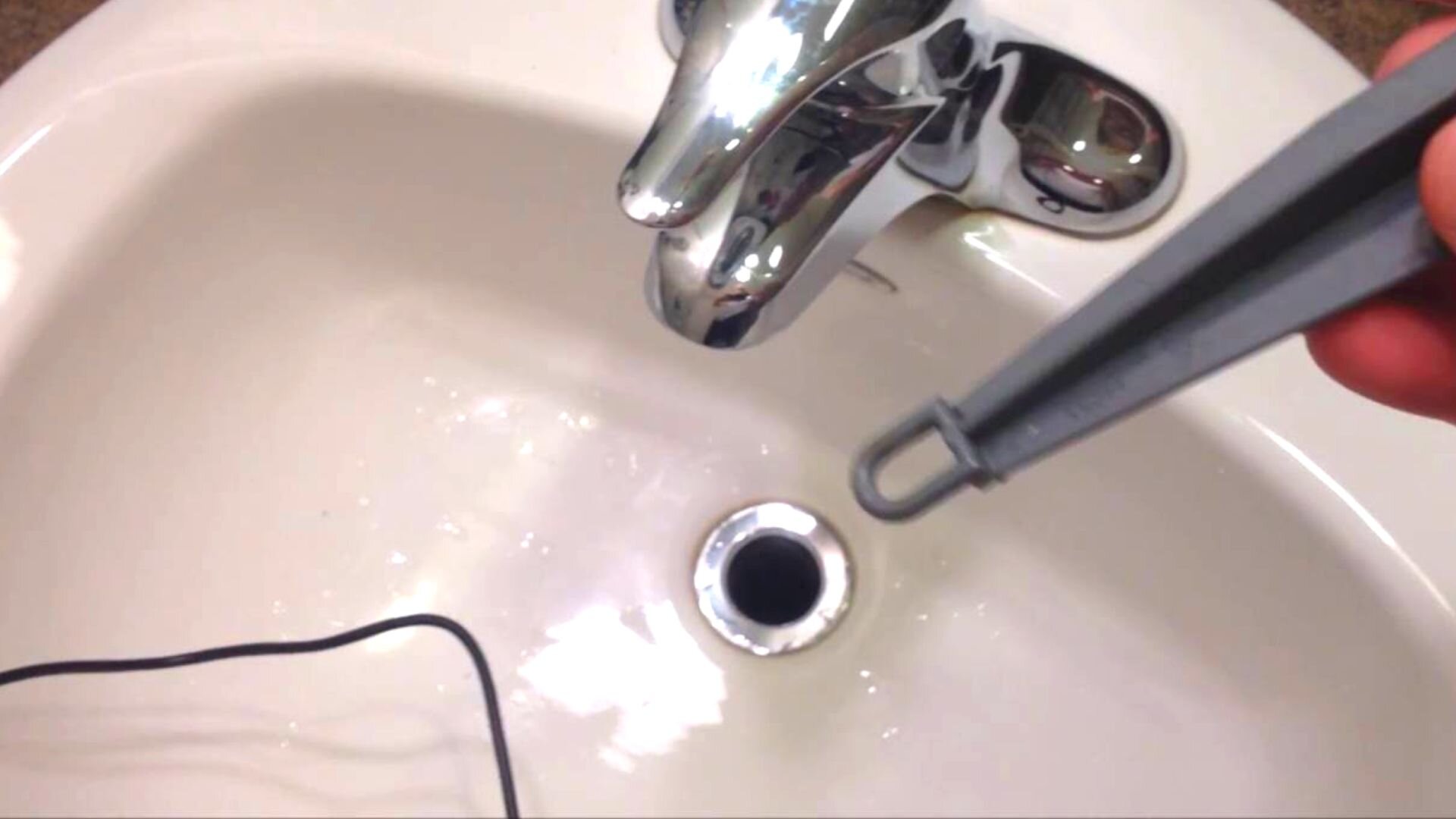
Have you ever noticed a small, curved pipe attached right under your kitchen sink drain? That’s the sink trap preventing toxic sewer gases from entering your home. But it can start malfunctioning due to several reasons.
Firstly, the rubber gasket (securing it to the outlet on the wall, the floor, or the one connecting it to the drain) can wear out. This is a relatively easy problem, as you can replace the gasket.
You can reinforce the seal by applying some plumber’s putty or sealant tape on either end of the sink trap or near the drain cover.
Also, check the condition of the sink trap. If it appears too old or has visible leaky spots, it’s best to replace it, either DIY or with the help of a professional.
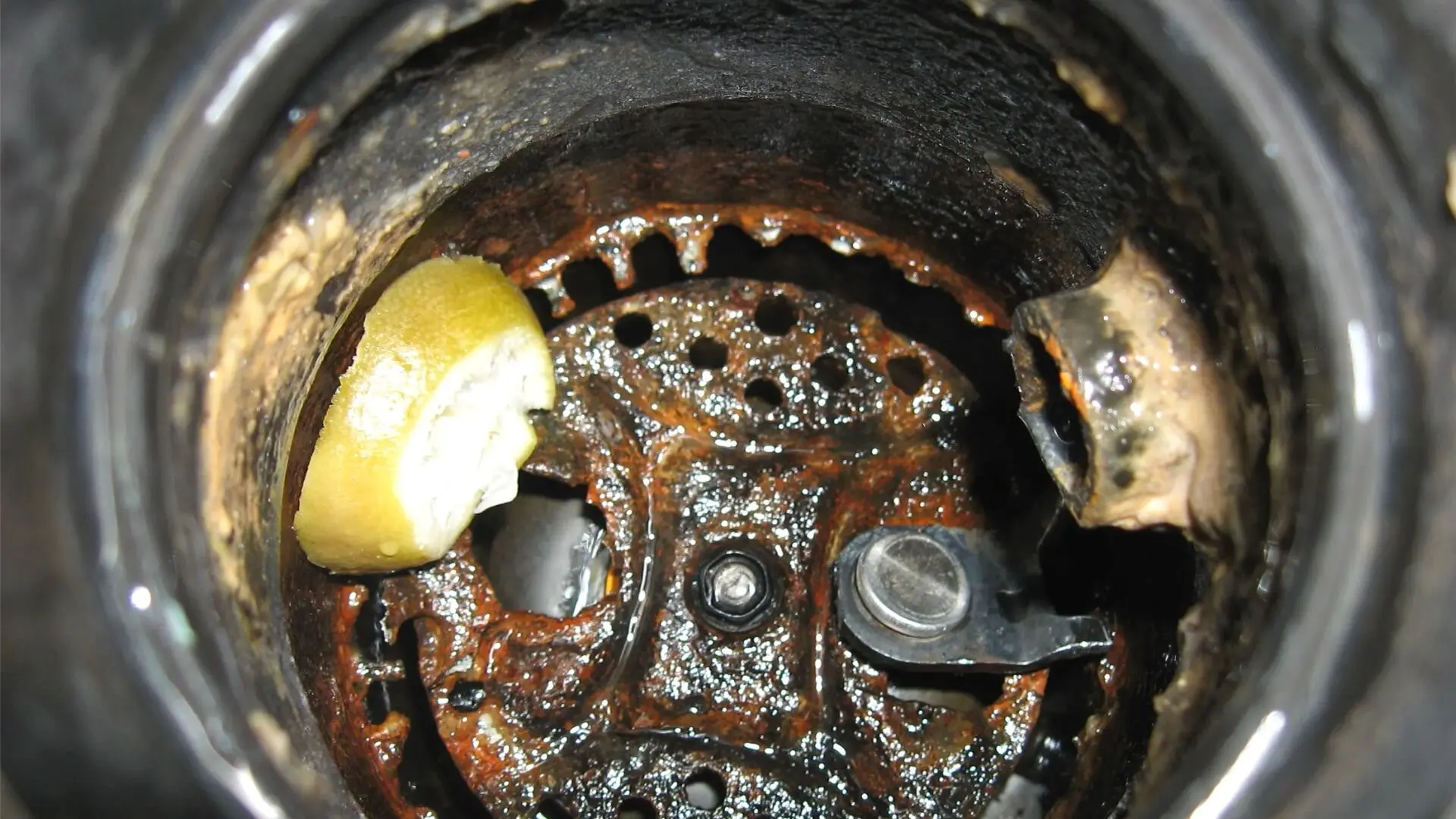
An unclean garbage disposal can become a breeding ground for bacteria, resulting in foul odour. That’s why it’s important to clean it regularly using household ingredients.
Pour equal amounts of baking soda and white vinegar into the disposal. You’ll hear bubbling or a gurgling sound in the drain. Cover it immediately with the rubber cap and wait until the noise stops. This breaks down clog build-up from grease, oil, and food particles.
Additionally, we suggest cleaning the rubber drain cap and the flaps with a sponge dipped in a soapy solution to eliminate any food smell. You can also chop up the peel of any citrus fruit and drop it in the disposal to remove unwanted odours from the pipe.
Regularly cleaning your sink and garbage disposal can go a long way in preventing foul smells. Try not to leave dirty dishes lingering, as food scraps can sneak into the drain, leading to blockages and odours.
For bigger issues like worn-out pipes or sewer blockages, you’ll need a professional. WP Plumbing’s licensed team can handle everything from clearing clogs to repairing leaks. Get in touch with us to book a visit today.
Get our essential tips for maintaining a clean and functional kitchen sink. Our blog offers easy-to-implement advice for preventing common sink blockages, helping you preserve the heart of your home.
Are you dealing with a smelly, unsightly problem in your home? Find out why sewage is coming up through your drains and what you can do to fix it! Learn helpful solutions from our blog – get your home back to normal in no time!
Plumbing maintenance is essential in keeping your kitchen safe and clean. This guide provides you with all the basic steps necessary to start today!
